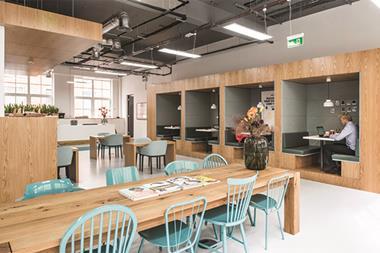In the world of offices, the gap between what is demanded and what is being supplied is growing.

There is clear evidence that we are at a crossroads for owners and developers of offices, where it’s crucial they recognise that the needs of their customers have shifted and they must run hard to catch up.
The expanding gap between what occupiers are demanding from their working environments and what the market is providing must be addressed, and it will be those developers that seize the opportunity that will be the clear winners.
The explosion of activity from the office as a service sector is a wake-up call for all owners of real estate. The opportunity of leasing large amounts of space to operators on long leases will become a threat unless landlords adjust the products and services that are offered to customers.
We are at a point where many developers are likely to look back in the not-so-distant future and regret not acting more quickly. The solution most commonly proposed by owners is to offer more flexible leases. This simplistic view misses the point of what, fundamentally, is being sought.

So what is it that occupiers are seeking and what will be the expectations of occupiers in the future?
The answer is a simple one, but how it is addressed is more complex. Occupiers are demanding increased productivity from their real estate and progressive occupiers see their real estate as a catalyst for revenue generation rather than a cost of doing business.
Delivering real value
Owners must shift from the ‘hardware’ approach of providing a building to a ‘software’ world, where real value is delivered through the services offered.
Going forward, we can expect the emphasis to shift from making a building work to making the people within a building work. The current key purpose of estate management adjusts to the added value of event management, as landlords connect customers not just within buildings but within portfolios.
We can expect the emphasis to shift from making a building work to making the people within a building work
Landlords will embed in buildings the technology that allows, if desired, for the measurement of how workspace is utilised. The data that could be collected should allow landlords to shift to being the experts on how space can be better used and made more productive, depending on the sector of the occupier and what kind of work environment they are trying to create. This sees the role of the landlord shift to that of a consultant provider.
Occupiers will undoubtedly expect these new levels of service to be provided. The question often asked is: will occupiers pay for such services? My answer is a simple one: occupiers will pay for services if they can see the value-add that comes from them.
People are the most valuable commodity an organisation possesses and developing workspaces that optimise their output and wellbeing is becoming ever more important. The opportunity exists for landlords to meet these demands and, in doing so, they can benefit from the additional revenue streams that will follow. This paradigm shift in approach is fundamental to closing the gap between provision and satisfaction.






























No comments yet